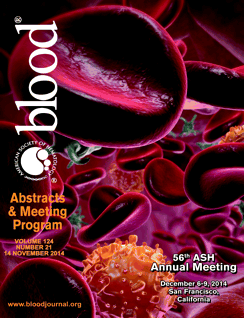Abstract
Introduction
Type 1 diabetes mellitus (T1DM) is a disease characterized by the attack of pancreatic islet B cells by anti-glutamic acid decarboxylase (GAD) antibodies.1 In the search for a solution, Voltarelli et al. performed peripheral blood autologous stem cells transplant (PBASCT) in patients with newly diagnosed T1DM with encouraging results.2,3 These results have been replicated.4,5 Intensive conditioning using 200 mg/kg of cyclophosphamide plus antithymocyte globulin employed are not without serious risk and several complications have occurred including one death, extended hospital management and higher costs.3,6 Therefore, we decided to carry out an PBASCT, using a less costly and outpatient- simplify method.7,8
Patients and Methods
This phase 3, single-arm study was performed at Hospital Universitario in Monterrey, México. Between January 2010 and July 2013, we included patients within first 3 months of type 1 diabetes diagnoses, 8 to 25 years old, with positive antibodies anti GAD, C peptide levels > 1.0 ng/mL, with or without previous ketoacidotic crisis. Ethics committee approved and written informed consent was obtained (www.clinicaltrials.gov as NCT01121029). The objectives were to determine baseline and 3-month serum levels of C-peptide, glycated hemoglobin (HbA1c), anti-GAD, quantify the insulin levels needed during the follow-up period, the morbidity associated with the procedure and the need for inhospital management. PBASCT was performed at the outpatient setting. Stem cells were mobilized using CFM 1.5 g/m2 I.V./day, 2 consecutive days, GCS-F , 10 µg/kg/day 6 days. In All patients we collected at least 2.0 x 106 CD34+ cells/kg. The conditioning consisted in CFM 500 mg/m2/day IV + fludarabine 30 mg/m2/day PO for 4 days. Cells were infused 24 hours after the last dose of chemotherapy. Ciprofloxacin (500 mg/bid), fluconazole (100 mg/qd), and acyclovir (400 mg/bid) were prescribed to all patients until the graft was reached.
After the 3 months of follow-up, patients were categorized in 3 groups: Complete responders (CR) defined as total independence of insulin , non-responders (NR) those achieving <10% reduction in insulin requirements and partial responders (PR) those achieving a reduction of 11 to 90% of insulin.
Results
Fifteen patients were included, 6 women and 9 men. Mean time from diagnosis was 80.06 days (SD ± 44.81). The mean AUC of the C-peptide level was 283.28 (SD 213.58). Baseline measurements of anti-GAD and HbA1c showed means of 10.42 U/mL (SD ± 13.26) and 7.94% (SD ± 1.93%), respectively.
A mean of 12.12 x 106 CD34+ (SD ± 8.2) was obtained. A statistically significant difference was found in the number of CD34+ cells collected between both sexes. In males a mean of 15.84x106/kg was obtained versus 6.54x106/kg in the female subgroup (p = 0.026). The myeloid engraftment was noticed in a median of 14 days (range 11-20 days) and the lower platelet count was 63x106/ml. Grade I-II adverse events occurs in 40% and were mainly nausea, vomiting, fever, alopecia and one case of hemorrhagic cystitis that resolved rapidly. Four patients developed fever during the period of neutropenia, and all improved with oral antibiotics and without hospitalization. Transplant related mortality at 100 days was 0%. A median follow-up of patients included in this analysis was 441 days (148-1261). Anti-GAD titers were reduced overall by 93.83% (p = 0.016). HbA1c values were modified downward by 15.01%, (p = 0.093). A1c levels showed a mean decrease of 0.87% in the 3 months of study. Overall, the daily insulin requirements decreased from 0.41 U/kg to 0.32 U/kg at the third month (p=0.46). Six patients achieved insulin independence. As mentioned, 3 were non-responders, and the rest were partial responders.
Conclusion
A simplify PBASCT in a outpatient setting is secure and a potential therapeutic strategy for early onset type 1diabetes.
No relevant conflicts of interest to declare.
Author notes
Asterisk with author names denotes non-ASH members.

